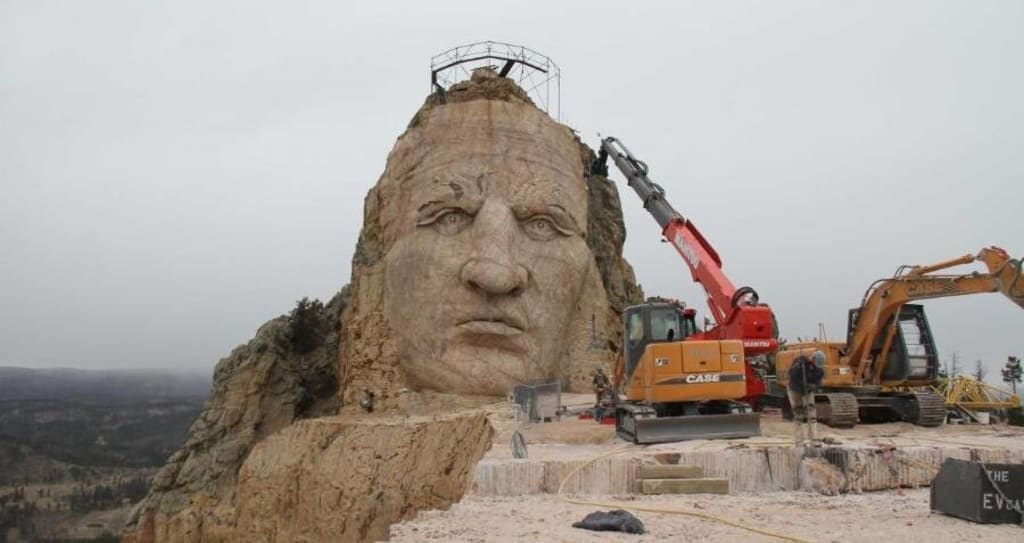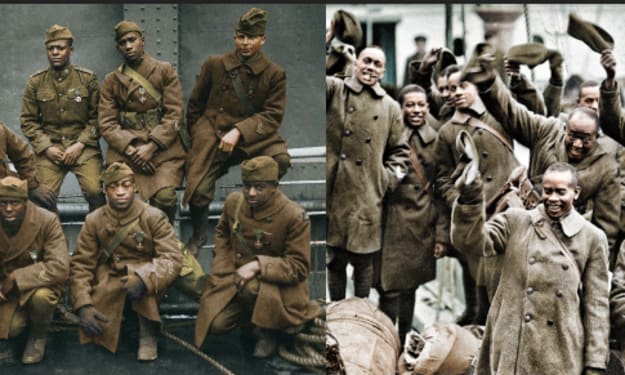The Uncompleted Monument Dedicated To The Sioux War Hero
Native American warrior riding his horse and pointing to his sacred tribal land, which he led for the Oglala sub-tribe.

The Crazy Horse monument at Custer City, Black Hills, South Dakota, is a sight to behold. Although work began in 1948, the cliffside memorial to the Lakota leader is not yet to be completed. Its progression makes for a captivating tale, but is all the more amazing because of the man it seeks to celebrate.
If completed, the sculpture will depict the Native American warrior riding his horse and pointing to his sacred tribal land, which he led for the Oglala sub-tribe. His head is the only portion of the sculpture that is now complete. It is 27 feet taller than the heads of each U.S. president atop Mount Rushmore.
Crazy Horse valiantly led his tribe in historic conflicts throughout the nineteenth century and protected his people against the ruthless expansion of the U.S. government until his death.
The Life Crazy Horse Lived
Crazy Horse began his life as a warrior at a young age.
Tasunke Witco was born in Rapid Creek, forty miles from the sculpture, in 1840. He was raised by a medicine man and was a member of the Oglala Lakota from infancy. The traditional traditions of Native American living in America were already under siege, and inter-tribal disputes exacerbated their condition.
Crazy Horse completed the Lakota initiation ceremony Hanbleceya (or "crying for a vision") as a young boy. He spent four days crying in the hills without food or drink in order to commune with the ghosts. Then, as a teenager, he rode into combat with a painted lightning bolt on his face and a feather in his hair.
During the Battle of Little Bighorn in 1876, he led the Lakota against Commander George Armstrong Custer's Seventh U.S. Cavalry unit. "Custer's Last Stand" resulted in the death of all 280 American men and nine officers. Crazy Horse's devotion to his people and combat prowess prompted the U.S. military to increase its aggression against Native Americans.
The government expanded its scout deployments across the Northern Plains to pick up any Native Americans who resisted. Those who were forced to relocate perished from famine. Crazy Horse was ultimately compelled to negotiate, and in 1877 he traveled to Fort Robinson under a truce.
According to others there, Crazy Horse's interpreter misread his statements, resulting in the collapse of peace talks before his eyes and the decision by commanding officers to jail him. The Lakota chief, resisted until his dying breath, pulled his dagger, and an infantry guard bayoneted him to death on September 5,1877, but the exact sequence of events remains controversial.
How The Crazy Horse Memorial Came To Be
Crazy Horse felt that having his photograph taken would deprive him of his spirit and shorten his life, but Lakota leader Henry Standing Bear believed it was important to erect a monument in Crazy Horse's honor. In an obvious injustice, the U.S. Presidents had been honored with Mount Rushmore some 17 miles away.

Henry Standing Bear wrote to Polish-American architect Korczak Ziolkowski in 1939, "My fellow chiefs and I would like the white man to know that the red man also has great heroes."
Who Funded The Crazy Horse Monument?
The Lakota chief not only traded his 900 acres of land for the desolate mountain with the Department of Interior, but continuously rejected federal funding in utter aversion to government involvement.
The project remains a private initiative as of now. The Crazy Horse Memorial Foundation, directed by Monique Ziolkowski, is determined to finish the enormous monument at any cost. Currently, it is totally supported by private donations and entry fees from the thousands of tourists that visit year.
When is the Crazy Horse Memorial slated for completion?
Ziolkowski labored alone, ascending Thunderhead Mountain via a wooden stairway with 741 steps and without electricity. His vision was to represent Crazy Horse astride his horse, pointing to the country where so many of his comrades had been slaughtered. Ziolkowski estimated it would take him 30 years to complete, but he never did.

Ruth, the architect's widow, took over after his passing in 1982 and made minor modifications to the design. She chose to sculpt the face before the horse because she believed it would attract tourists she could charge to continue working on the project. In 1998, with the assistance of her seven children, the face was completed.
Henry Standing Bear would have been happy to learn that the face of his idol is 27 feet taller than those of Mount Rushmore's presidents. The monument is ultimately unfinished and is not based on any known image of Crazy Horse; rather, it is an artistic interpretation of the guy.
If completed, it will be the second-largest structure in the world, after India's Statue of Unity. When exactly will the Crazy Horse Memorial be completed? Currently, it is impossible to say.
About the Creator
Rare Stories
Our goal is to give you stories that will have you hooked.
This is an extension of the Quora space: Rare Stories
X(formerly Twitter): Scarce Stories
Official Bookstore: davidkellertruecrime
Writers:
....xoxo






Comments
There are no comments for this story
Be the first to respond and start the conversation.